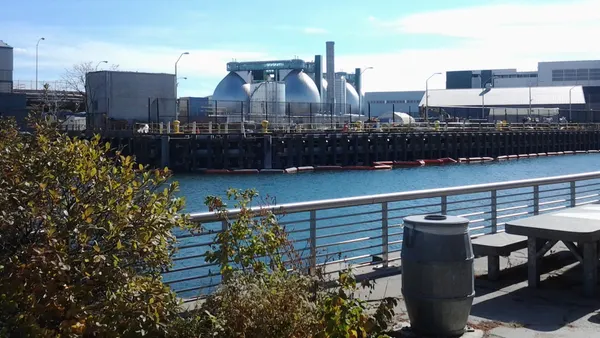Dive Brief:
- Since Massachusetts enacted its commercial organics diversion mandate in 2014, haulers have reported a 56% increase in collection customers, according to a recent presentation by the state's Department of Environmental Protection (DEP).
- Last year, this resulted in 260,000 tons of material being diverted. That breaks down to 166,000 tons at compost facilities, 57,000 tons at anaerobic digesters, 22,000 tons donated (up more than one-third since 2014), 13,000 tons of beverages processed into wastewater from two specific facilities and at least 4,000 tons fed to animals, though the DEP believes the true animal feed number may be much higher. These numbers do not include 50,000 tons processed via on-site systems.
- In terms of infrastructure, Massachusetts currently has 45 total sites. This includes 150,000 tons of compost capacity, 315,000 tons of digestion capacity and six de-packaging operations. The DEP reported that seven new digesters — with as much as 570,000 tons of new capacity — are in various stages of permitting and development.
Dive Insight:
Last year, the DEP released a study touting $175 million in economic activity related to the 2014 diversion mandate. So far, the agency has issued a limited amount of compliance notices and believes overall acceptance of the mandate has been high. While some of the diversion increase can be attributed to businesses having to comply, the gradual uptick year after year shows that others have been opting in since 2014. The DEP attributes some of this to state assistance program RecyclingWorks. Some of it can also be tied to the growing interest in food waste throughout the state and the country.
In addition to commercial activity, Massachusetts has a range of residential options through municipal curbside programs, subscription services or drop-off sites. As Boston moves forward with a new "zero waste" planning process, the city is considering its own curbside program, similar to neighboring Cambridge. Yet a number of other cities have deemed such programs too expensive, due in large part to a lack of local processing capacity. The region does have a thriving food recovery network — which has helped boost statewide numbers — but that can only go so far, especially for capturing residential material.
This is a reminder that even in states such as Massachusetts, often viewed as a leader on organics policies, processing capacity expansion takes time. Upfront costs can be high, plans can change, community relations can be difficult and demand may not always grow at the same pace. Contamination also continues to be a challenge that more companies are working to address.
Organics diversion is critical for Massachusetts, which has dwindling landfill space and little interest in waste-to-energy expansion. As the DEP continues to work on a new 2020-2030 Solid Waste Master Plan, this is seen a top priority. Next year, the agency will conduct a comprehensive capacity survey for all disposal and processing infrastructure, and stakeholder meetings will continue, to figure out what the state's waste future should look like.









